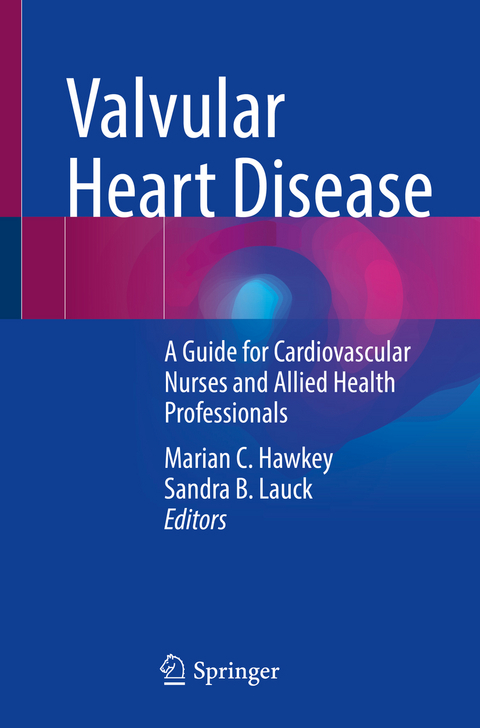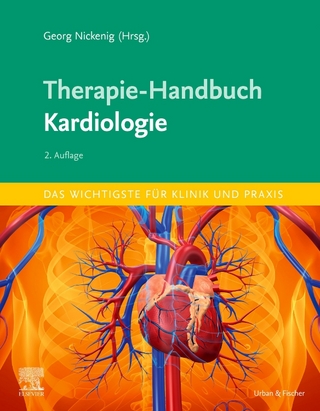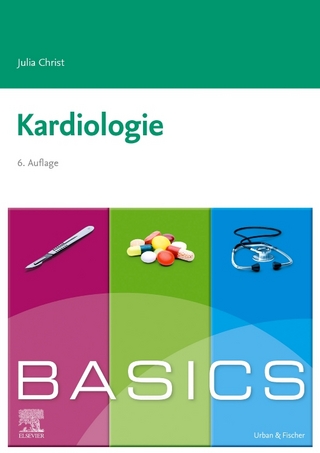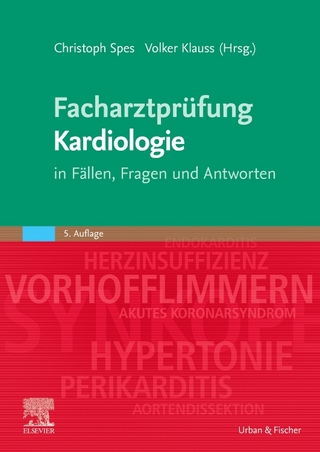
Valvular Heart Disease
Springer International Publishing (Verlag)
978-3-030-86232-9 (ISBN)
This book serves as the "go-to" resource for cardiovascular nurses and other health care practitioners involved in the care of patients with acquired valvular heart disease. It includes unique information about heart valve anatomy and pathophysiology, the complexity of clinical presentations and diagnostic evaluation, patient education and shared decision-making, surgical and transcatheter treatment options, and transition to palliative care. The content focuses primarily on the specialized care of patients with aortic stenosis and regurgitation, and mitral and tricuspid regurgitation.
In addition, this unique resource provides timely information to guide a patient-centred and team-driven approach that reflects contemporary and innovative practice in the management of valvular heart disease. The essential topics of strengthening the multidisciplinary Heart Team and programmatic processes of care, the priorities for nursing care, and the multifactorial challenges of managing this complex patient population are explored in detail. Importantly, this resource aims to support all clinicians who are involved in the various timepoints of patients' full trajectory of care, from their evaluation pathway, admissions for treatment, and long term follow-up.Clinicians require contemporary knowledge and evidence to guide their practice, provide appropriate care for this complex patient population, and contribute to the advancement of practice. To date, there has been little emphasis placed on the management of valvular heart disease in cardiovascular nursing and allied health curriculum. This book fills this gap and addresses the pressing need for a user-friendly resource to guide the care for this growing population in a rapidly changing clinical environment. The editors are international leaders in the care and management of patients with acquired valvular heart disease and program development. They are widely recognized for their pioneering role in shaping the way we care for these patients.
Marian Hawkey is a registered nurse at Hackensack University Medical Center, USA. She has a nursing background in cardiac and critical care, and has specialized in the field of transcatheter heart valve therapy since 2006. She's an invited speaker at national and international cardiology meetings, and has co-authored multiple manuscripts on topics relevant to the care of patients undergoing transcatheter aortic valve replacement. Ms. Hawkey has collaborated on the development of national training courses for nurses and allied health professionals working in the transcatheter valve therapy field.
Sandra Lauck is a nurse clinician scientist at the Centre for Heart Valve Innovation at St. Paul's Hospital. Dr. Lauck holds a PhD in nursing from the University of British Columbia, Vancouver Canada where she is a Clinical Associate Professor. She is an international leader and author of multiple publications related to TAVR program development and cardiovascular nursing. She leads multidisciplinary research focused on the development of clinical interventions to support innovation in cardiac care and the measurement of patient-reported outcomes.
Chapter 1: Introduction and ObjectivesM. Hawkey, S. Lauck-Nursing practice in the setting of VHD - Roles and responsibilities of nurses caring for patients with VHD
-Recent developments in the treatment of VHD; expanded role of nursing in this area of care delivery-Gap that this book fills-Objectives, target audience and content
Section 1: Understanding Valvular Heart DiseaseChapter 2: Overview of Patient PopulationM. Hawkey, B. Hojberg Kirk-Prevalence/epidemiology of VHD-Patients' experiences of disease trajectory-Clinical presentation(s) and areas of nursing practice where patients present-Special considerations: oVHD in older patientsoVHD in younger patientsoPatients with multiple VHDoThe impact of concomitant diseases
Chapter 3: Pathophysiology of Valvular Heart DiseaseE. Perpetua-Brief review of anatomy and physiology-Aortic stenosis-Aortic regurgitation-Mitral regurgitation-Tricuspid regurgitation-Pulmonary stenosis-Endocarditis
Section 2: Valvular Heart Disease Program StructureChapter 4: The Multidisciplinary Heart Team ApproachS. Lauck-Origins, rationale and evidence supporting the MDT in the treatment of VHD-Membership, roles and responsibilities; the role and contributions of nursing leadership in promoting a MDT approac-Examples of models of MDT "in action"-The role of a palliative approach in the MDT model-Considerations of MDT treatment decision and procedure planning-Challenges and limitations
Chapter 5:Processes of Care for Valvular Heart Disease ProgramsM. Speight-Organization and components of patient pathway from referral to follow-up-The role of the Valve Program Clinician-Examples of models of processes of care: Heart valve clinic vs. "procedure-based" referral programs-Patient pathwayoScreening, evaluation, patient teaching and treatment decisionoPeri-procedure processesoPost-procedure processesoFollow-up processes
Section 3: Assessing Valvular Heart Disease Chapter 6: Clinical AssessmentJ. Munoz-Clinical consultations and assessments
Chapter 7: Imaging ModalitiesR. Brandwein-Diagnostic imaging:oCardiac echocardiography (TTE and TEE)oComputed tomographyoCardiac catheterizationoMagnetic resonance imaging-Risk scores for the treatment of VHD
Chapter 8: Understanding Function, Frailty and Self-Reported Health StatusT. Norekval-Functional status-Frailty and its implications for treatment decision and post-procedure care-Patient-reported outcomes
Chapter 9: Making a High Quality Treatment Decision: Shared Decision-MakingR. Palmer-Shared decision-making-Patient decision aids-Challenges and limitations of implementation
Section 4: Treatment Options for Valvular Heart Disease and Implications for NursingChapter 10: Surgical TreatmentB. Borregaard-Surgical techniques-Need to complete
Chapter 11: Transcatheter TreatmentS. LauckA. Smith
Section 5: Nursing Care Priorities Valvular Heart Disease Chapter 12: Safe Recovery after Valvular Heart SurgeryP. Keegan
Chapter 13: Safe Recovery after Transcatheter Heart Valve ProceduresJ. WymanChapter 14:Transitions of Care and Long Term Follow-Up after Heart Valve Surgery and Transcatheter ProceduresN. Straiton
Chapter 15: Conclusion: The Next Decade of Treating Valvular Heart Disease - An Opportunity for Nursing LeadershipM. Hawkey, S. Lauck
International authorship: Hackensack, NJ, USA, Sydney, AU, Copenhagen, DE, Bergen, NO, Seattle, WA, USA, San Francisco, CA, USA, New York, NY, USA, Vancouver, BC, Canada, Lebanon, USA
| Erscheinungsdatum | 02.12.2021 |
|---|---|
| Zusatzinfo | XIV, 246 p. 67 illus., 64 illus. in color. |
| Verlagsort | Cham |
| Sprache | englisch |
| Maße | 155 x 235 mm |
| Gewicht | 403 g |
| Themenwelt | Medizinische Fachgebiete ► Innere Medizin ► Kardiologie / Angiologie |
| Medizin / Pharmazie ► Pflege | |
| Naturwissenschaften ► Biologie | |
| Schlagworte | Cardiovascular • Interventional cardiology • nursing • team-based care • Transcatheter Valve Therapies • Valvular Heart Disease |
| ISBN-10 | 3-030-86232-1 / 3030862321 |
| ISBN-13 | 978-3-030-86232-9 / 9783030862329 |
| Zustand | Neuware |
| Haben Sie eine Frage zum Produkt? |
aus dem Bereich


